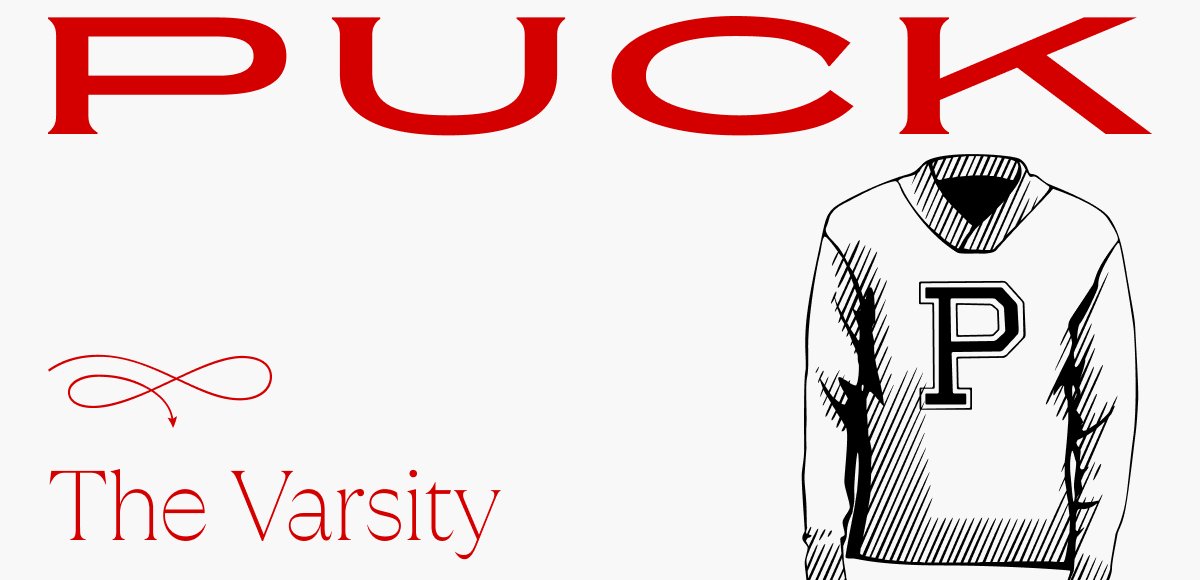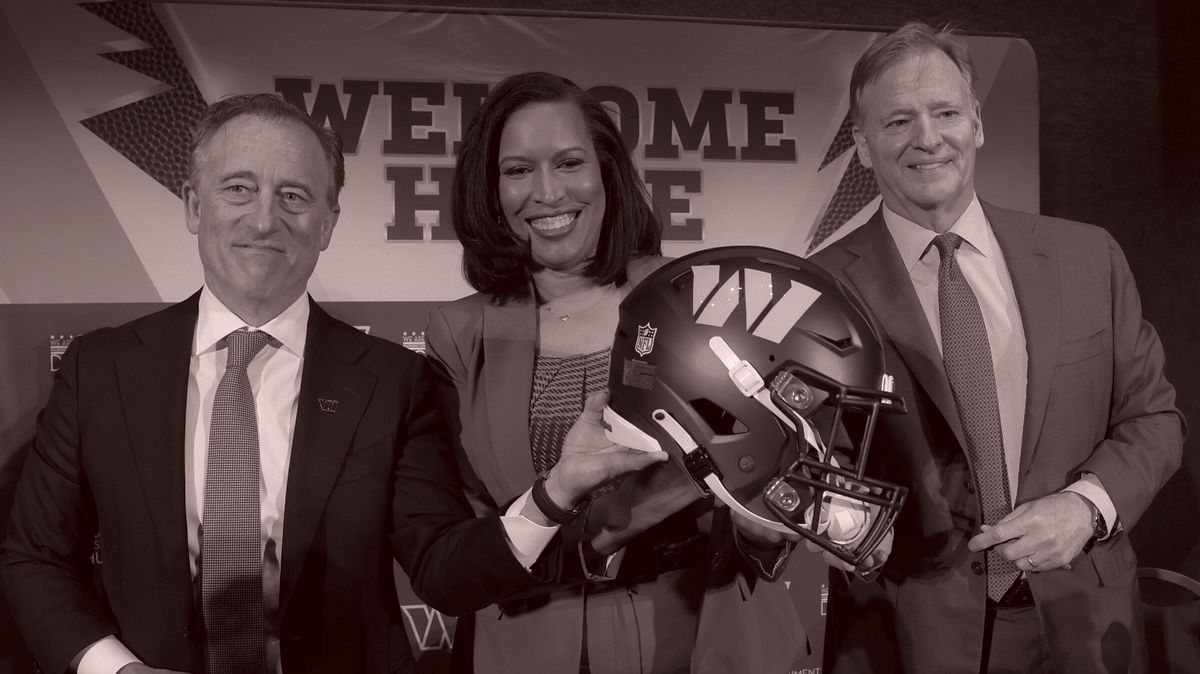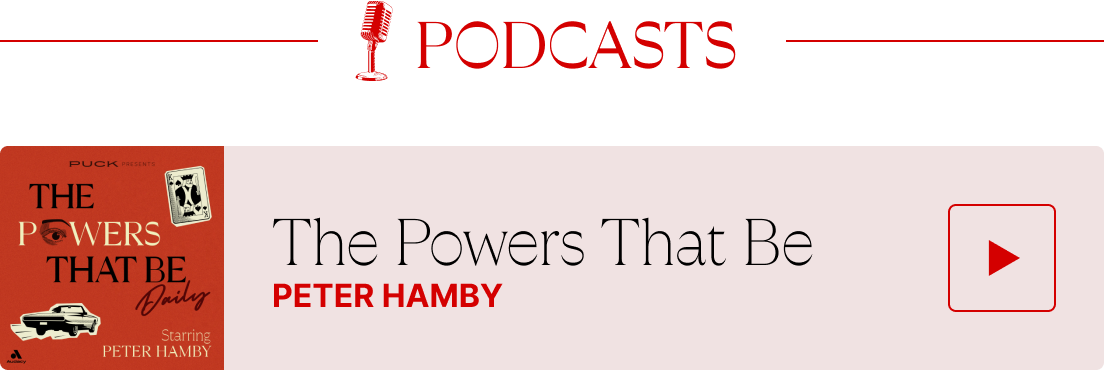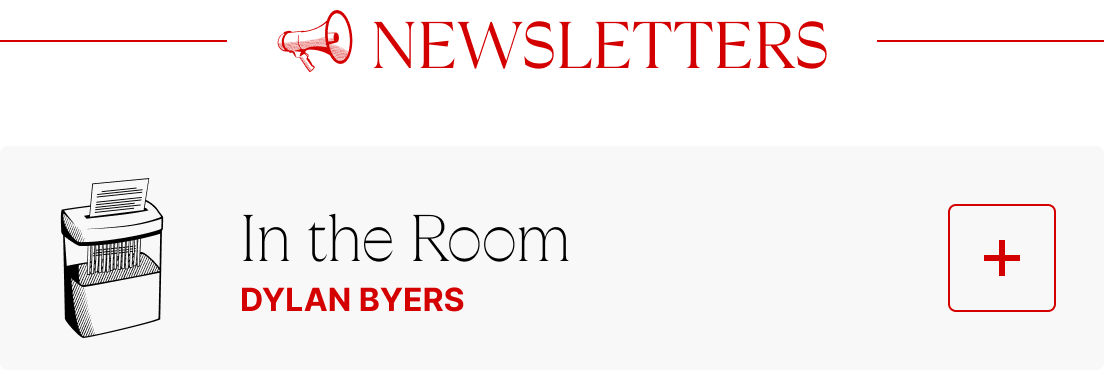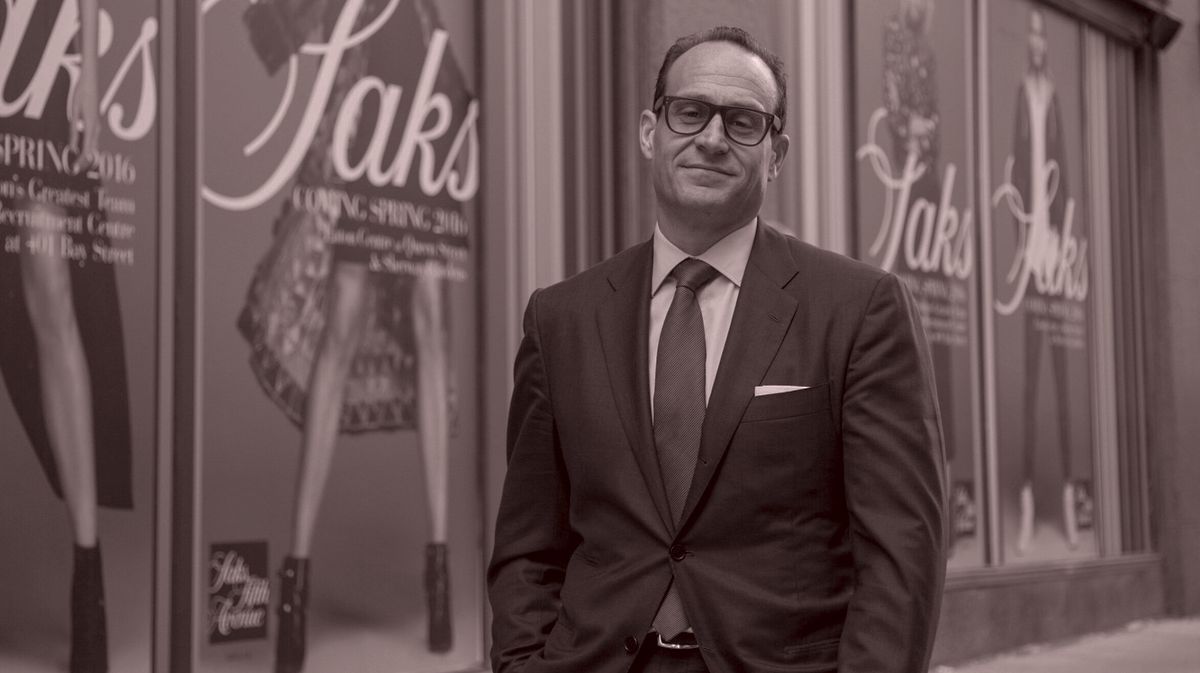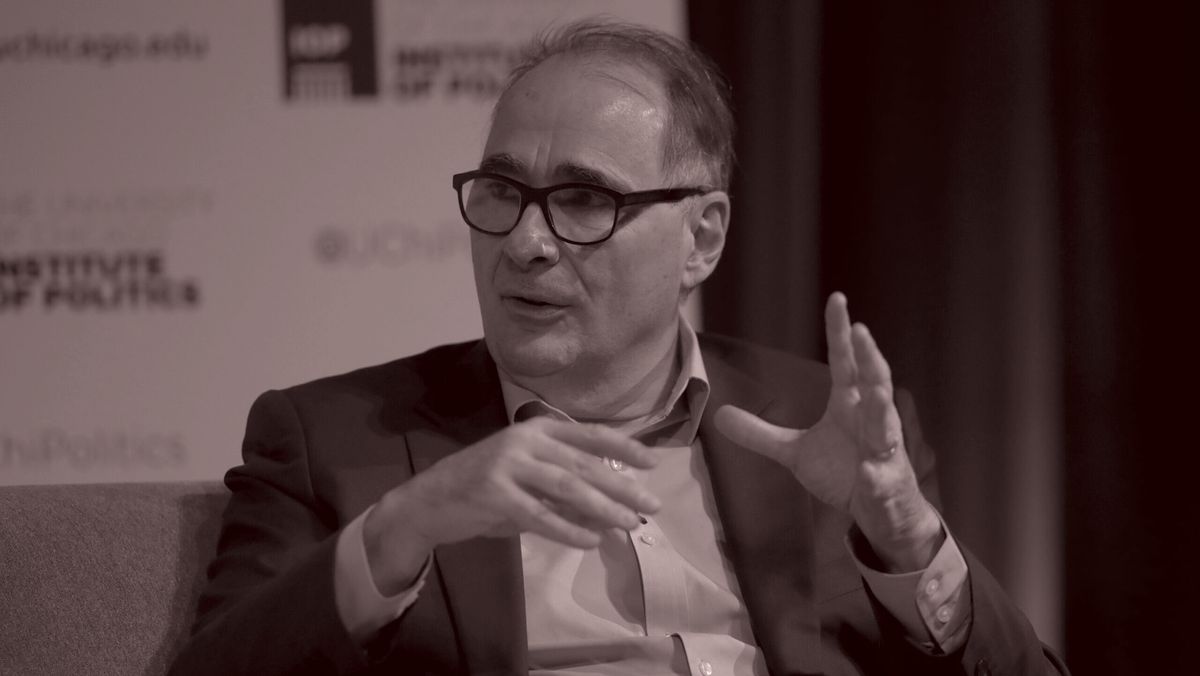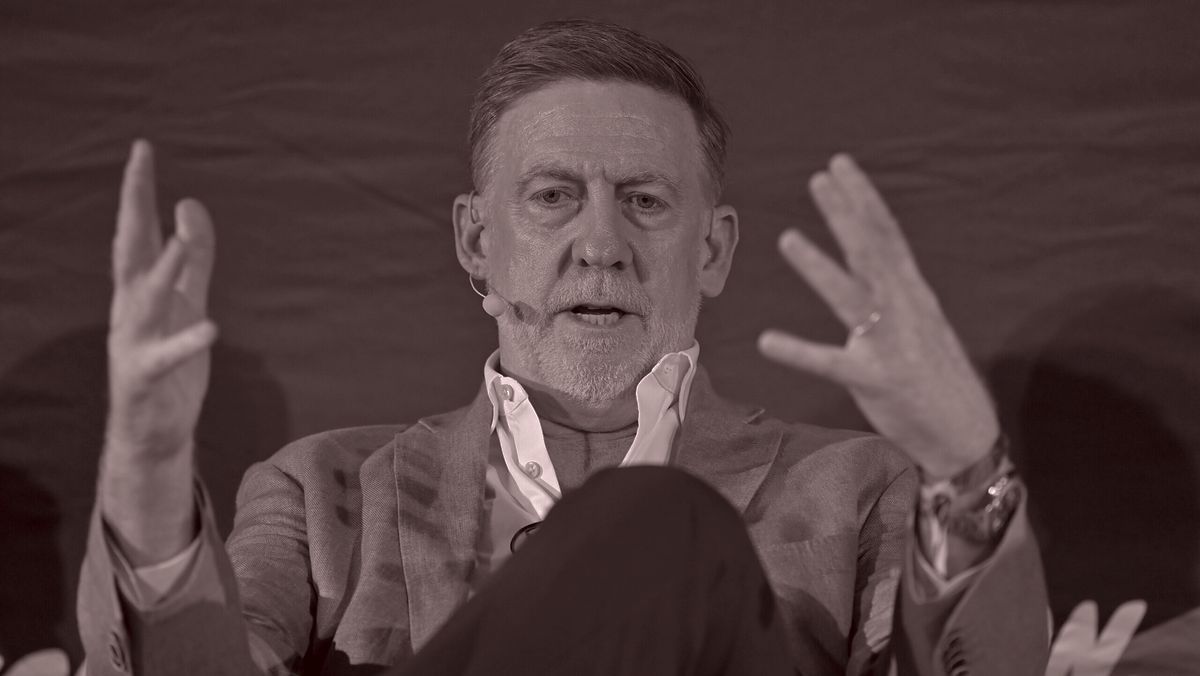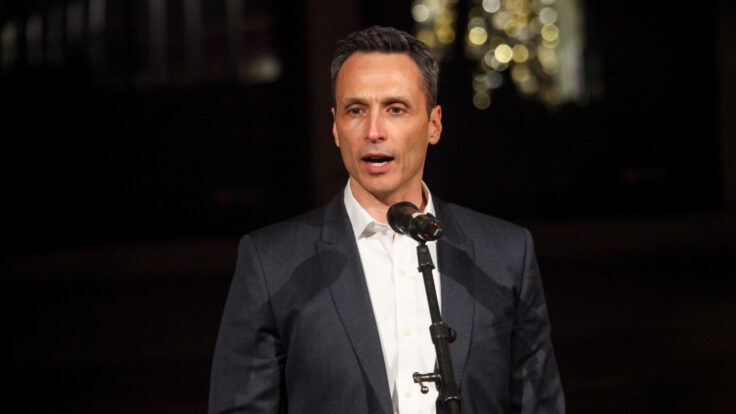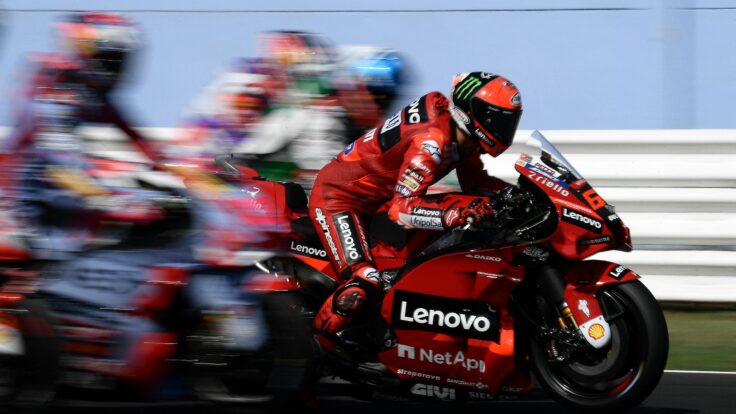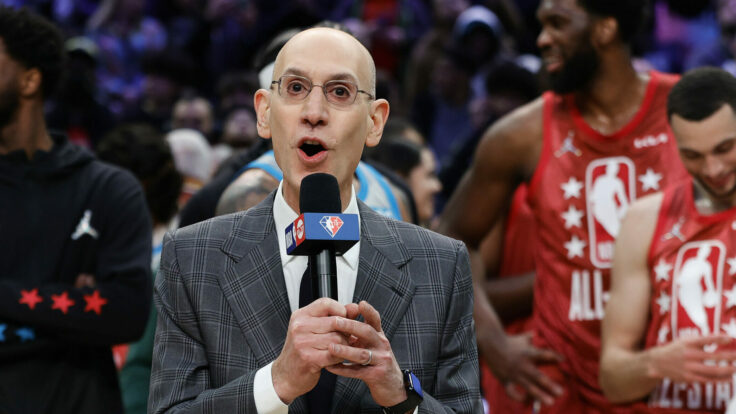Welcome back to The Varsity, a thrice-weekly email on the sports media
industrial complex. I’m in my hometown of Washington, D.C., where local sports fans are euphoric about the plan to move the Commanders back home from the wilds of Landover, and into a new, $2.7 billion R.F.K. Stadium. (Big year for the Kennedys in town…) But the league and the team could still have a fight on their hands. More on that below.
🚨Pod alert: The NHL playoffs have been especially entertaining this month, so it seemed like a good time to ask ESPN’s
hockey savant Greg Wyshynski to join The Varsity on Wednesday. We’ll talk about what the league can do to capitalize on this momentum, among other topics. Also, make sure you listen to my conversation with NBC’s Steve Kornacki, who
walked me through his decision to ditch MSNBC for NBC News and NBC Sports. You can find episodes here and here.
Viral video alert: Clips of Bill Belichick’s bonkers CBS Sunday Morning interview starting filling my
social feeds yesterday morning. The whole interview is worth a look, from the coach’s fashion sense to his 24-year-old inamorata, Jordon Hudson, who regularly interrupted the interview. Unheard in the
background is Marchand shamelessly rushing over to Jordon with a glass of crisp (not tart!) sancerre.
Reminder: Upgrade to the Inner Circle for access to streaming savant Julia Alexander’s can’t-miss Tuesday columns. Click here to upgrade!
|
- A couple of NFL Draft predictions: The NFL and ESPN aren’t going to see the official Nielsen numbers for the third day of the NFL Draft until tomorrow morning, but it seems fair to suppose that the broadcast will draw the biggest ratings in the event’s history—due entirely to the Shedeur Sanders storyline. The Colorado QB, who was recently considered a potential top five pick, had to wait until day three to hear his name called, when the Browns
took him in the fifth round. The Shedeur drama surely contributed to the big day-one and -two audience numbers posted by ESPN and NFL Network. The draft’s opening night drew 13.6 million viewers on Thursday and 7.3 million on Friday—second only to the draft held via Zoom during the pandemic.
The TV rights for next year’s draft aren’t locked down, but I expect new deals to be announced by the upfront meetings in New York next month. ESPN, which has broadcast the draft for 46 consecutive
years, seems certain to retain its rights. As I mentioned last week, sources have described YouTube as the frontrunner for the streaming rights.
- Flagship subs: My Puck partner Matt Belloni and LightShed Partners’ Rich Greenfield recently had a fascinating discussion on
The Town, Matt’s great pod, about where ESPN’s planned direct-to-consumer service will find most of its subscribers. Greenfield posited that the bulk of subscribers would come from the pool of people who already subscribe to a bundle—a stance I agree with. Here’s part of their conversation…
Rich: There’s going to be very, very few ESPN Flagship subscribers who are not bundled subscribers. The overwhelming majority of people who have access to this are going to be people
who take a bundle of channels from Comcast or Charter or YouTube TV and get ESPN Flagship.
Matt: Or the Disney streaming bundle, which may or may not include Max. So you can get four of the big services—Disney+, Hulu, ESPN over-the-top, and Max for a price.
Rich: The problem with that is, who is the person that finds that’s good enough for sports? If you’re a die-hard sports fan willing to spend $20-$25 a month to add ESPN onto your Disney-Hulu bundle, you’re not
going to want Fox? You’re not going to want CBS?
Matt: Presumably, there will be a service that [bundles] all of those for you, and you subscribe to the Sports Fan Bundle.
Rich: Maybe. Those skinnier bundles are certainly happening in the linear channel world. Whether they happen in a real way in the streaming world is T.B.D. A lot of these partners don’t want to work together.
- A $900 million UFC payday:
MoffettNathanson analyst Robert Fishman predicted that UFC will wind up clearing $900 million per year for its media rights by splitting them into at least two packages. In a report released this morning, Fishman noted that $900 million would be a 1.6x jump in the annual average value of UFC’s current ESPN deal. “TKO also has the ability to be even more creative with its rights, including a possible PPV revenue share arrangement to share in potential upside rather than receiving
a fixed rights fee, as the ESPN deal is currently constructed,” Fishman wrote.
He also predicted that Netflix will pay $350 million for the WWE’s Premium Live Event (PLE) business, which includes major productions like Crown Jewel and currently resides on Peacock—but that deal expires next year. “It only makes sense that Netflix would want to unify global ownership of the PLE rights to enable it to better drive sponsorship and advertising around the package,” Fishman wrote. “At the same
time, we acknowledge that current rights holder NBCUniversal may look to move on from the package after securing NBA rights, which could make the bidding process less competitive.”
- The WNBA scores a preseason: At 1 p.m. today, Scripps announced that it will carry the WNBA’s first nationally televised preseason games this Friday—a doubleheader featuring Paige Bueckers and Angel Reese. Just two minutes
later, ESPN emailed a press release of its own, touting its WNBA preseason game on Sunday with Caitlin Clark, where her Indiana Fever will play the Brazilian national team at Iowa’s Carver-Hawkeye Arena. NBA TV will produce another Fever game, against the Mystics, on Saturday.
This may not seem like that big of a deal—these are just preseason games, after all. But it does mark a milestone for the league, and it demonstrates that media companies are eager
to build on last season’s record, Clark-driven audience.
- Kornacki horses around: Saturday’s Kentucky Derby will mark Steve Kornacki’s first big NBC Sports assignment since the political analyst signed his new deal with NBC News and NBC Sports a few weeks ago. Kornacki will be on-set near the betting windows, alongside handicapper Eddie Olczyk, who will offer advice to viewers betting on the race.
Kornacki
is known for working the election night map, but he demonstrated a desire to spread his wings during our recent conversation on the Varsity podcast. To wit: He sounded more enthusiastic about a taped piece he was doing on famed 89-year-old horse trainer D. Wayne Lukas than, say, the early voting results from Maricopa County. The segment, which will run during Saturday’s coverage, illustrates how Kornacki’s job has changed thanks to his new deal. He’s still NBC’s go-to
for data and stats, but now he’s also focused on storytelling.
Lukas won the Preakness Stakes last year with Seize the Grey. “He’s having a bit of a renaissance the last few years,” Kornacki told me. “I’m an admirer of his. He has an unparalleled work ethic. You see these folks who were legends in sports when you were a kid, and that’s what he was to me. … We’re going to spend some time with him. He’s got a horse in the Derby this year, and we’re going to put together a package that I’m
really, really excited about. I haven’t done that kind of thing before.”
|
|
|
The real story behind the Commanders’ return to D.C. proper is the NFL’s
crafty public-private partnership financing structure that facilitates not only the creation of new stadiums, but also the feel-good stories around them.
|
|
|
Over the past few decades, as the value of sports franchises has exploded, ass-covering local
politicians have learned to model a familiar behavior anytime one of their teams tries to whip up fervor in support of a new stadium: Publicly balking at any suggestion that public funds be used to build an arena for a billionaire owner. “Chicagoans love the Bears,” they’ll say, “but not enough to support deploying taxpayer dollars for a new stadium.” And local voters seem to mostly agree: A year ago, Kansas City voters soundly rejected a tax increase that would have been used to
refurbish Arrowhead Stadium (home of the Chiefs) and Kauffman Stadium (the Royals). A year prior, Tempe voters rejected a taxpayer-funded arena to keep the Arizona Coyotes in the state. Earlier this month, San Francisco Giants C.E.O. Larry Baer candidly discussed his team’s do-or-die private financing journey to move the team from the dregs of
Candlestick to a waterfront ballpark downtown.
Roger Goodell and the NFL, however, have developed a public-private partnership playbook that has made these deals more palatable to pols and voters alike. And its winning formula was lurking in the background amid the news, announced earlier today, that the Commanders plan to move back to D.C. from the wilds of Landover, Maryland, to the tract that houses the old R.F.K. Stadium. The Commanders will invest $2.7 billion in a
new stadium at the R.F.K. site, and the city is being asked to put close to $1 billion toward the development.
While several members of D.C.’s City Council have already signaled their opposition to the deal—the body needs to ratify the proposal—the league and the team have expressed confidence. After all, this sort of financial structure has succeeded in the past. During today’s press conference, Goodell compared the Commanders’ deal with D.C. to the Rams’ deal that led to the opening of
SoFi Stadium in 2020, and the Falcons’ deal that led to the opening of Mercedes-Benz Stadium in 2017—and even the Lions deal that led to the erection of Ford Field way back in 2002. “There are many cities where they have seen the reinvestment into that community with the stadium being surrounded by development, such as this, and that is very powerful,” Goodell said. “They’ve all been successful, both in the community’s mind and our mind. But they’ve also been successful from an economic
standpoint.” SoFi, for example, was built in Hollywood Park and features restaurants, cinemas, retail… and even Cosm.
So what, pray tell, will a risk-averse, hidebound politician say about a concession to billionaire ownership that masquerades as a vital community development investment? That’s a hard proposition to roundly veto, especially when it’s tied to a draw like the NFL. Indeed, the league and its owners have been trying to create entertainment districts
around their stadiums, which are critical for the long-term health of an area given that teams host fewer than a dozen football games per year. During today’s press conference, Goodell, Commanders owner Josh Harris, and D.C. Mayor Muriel Bowser hyped up the new, 68,000-seat domed stadium, while also expressing unbridled optimism about new retail developments, housing, and park space that will create revenue and jobs for the city.
“This will be critical in revitalizing an area that has been dormant and undeveloped for nearly 30 years, when the team first left,” Goodell said.
The other key aspect of the NFL’s strategy is to tout the level of private investment. And Harris, who shattered a league record by forking over $6 billion for the Commanders, isn’t shirking here. The Apollo co-founder has committed $2.7 billion toward the project, some of which will be paid through an NFL fund. “The NFL has a long
history of investing in stadium projects along with the home team,” Goodell said. “But all 31 teams will contribute along with Josh and his partners.”
Nobody’s talking much about who will invest, but it seems likely that the team will use private equity (or private credit) to fund part of the development. As far as the $1 billion in public money, that’s in the neighborhood of what Buffalo and Las Vegas paid. Meanwhile, the announcement frames the staggering success that Harris has had in
his inaugural season—one in which he took over the team from the most despised man in the NFL (and D.C., too, really), drafted Jayden Daniels, reached the NFC championship game, and then pledged to move the team back to his hometown. Smart guy that he is, he’ll wait till this reciprocal tariff madness has ended before he starts building.
|
On ESPN Flagship: “All platitudes about serving younger-fan behavior are not necessarily
wrong. However, what was surprisingly left unsaid is that they are going to ask these younger fans to pay $25+ a month for Flagship. Will younger fans pay that premium to receive what amounts to merely a different flavor of similar content they get for free on TikTok, Instagram, and YouTube? There’s no way of avoiding the inconvenient truth that live games simply have to be what is valued primarily.” —A former ESPNer
More on Flagship: “I mostly watch
ESPN for SEC football. I cancelled my Comcast subscription after the championship game in January and will subscribe to ESPN Flagship at launch. If Fox Sports isn’t there, I’ll just go without Fox Sports.” —A media executive
On how the cable business has funded sports: “It’s refreshing to see a journalist finally acknowledge that no one has benefitted more from the cable TV platform than the sports industry. The people who took long-term financial risk
to build that platform out (names like Dolan, Magness, Hostetter, Roberts, Malone) and create pay TV should be recognized by all leagues, conferences, etcetera for that foundational business creation more than network middlemen who were merely pass-through partners from rights deal to rights deal.” —A media executive
On Mike “F’n” Florio’s pod appearance: “I’d
love to hear someone like Mike talk about an evolution of the NFL Draft that gives players and teams flexibility more similar to the NHL and MLB. There were several day three QBs with college eligibility that will make less money than if they were allowed to go back to school via the transfer portal (e.g., Quinn Ewers). This would require coordination between the NFL and the NCAA, but I see some mutual incentives available across all parties involved.”
—A Varsity subscriber
On tariffs: “Try telling the Bills, Browns, Bears, and Rays—teams that are currently or trying to build new facilities—that tariffs don’t impact sports. Not only will imported building materials artificially increase in price, but domestic products will as well. If your competitor has to charge 10 percent more, you can charge 9 percent more and still be cheaper. There have already been supply chain issues, and with the ongoing
construction labor shortage, tariffs aren’t going to help.” —A Varsity subscriber
Update from the Varsity subscriber who doesn’t subscribe to NBA TV and thus couldn’t watch a Clippers-Nuggets playoff game at home: “I went to the game instead.”
|
|
|
Join Emmy Award-winning journalist Peter Hamby, along with the team of expert journalists at Puck, as they let you in
on the conversations insiders are having across the four corners of power in America: Wall Street, Washington, Silicon Valley, and Hollywood. Presented in partnership with Audacy, new episodes publish daily, Monday through Friday.
|
|
|
Ace media reporter Dylan Byers brings readers into the C-suite as he chronicles the biggest stories in the industry:
the future of cable news in the streaming era, the transformation of legacy publishers, the tech giants remaking the market, and all the egos involved.
|
|
|
Need help? Review our FAQ page or contact us for assistance. For brand partnerships, email ads@puck.news.
You received this email because you signed up to receive emails from Puck, or as part of your Puck account associated with . To stop receiving this newsletter and/or manage all your email preferences, click here.
|
Puck is published by Heat Media LLC. 107 Greenwich St, New York, NY 10006
|
|
|
|
